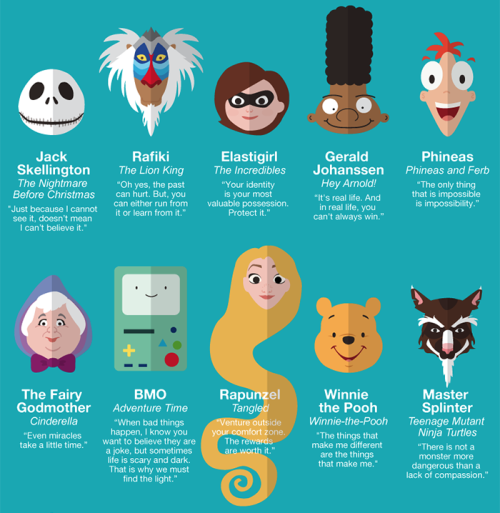Look Up! Perseid Meteor Shower Peaks Aug. 11-12
Look Up! Perseid Meteor Shower Peaks Aug. 11-12
Asteroid Watch logo. Aug. 2, 2016 Make plans now to stay up late or set the alarm early next week to see a cosmic display of “shooting stars” light up the night sky. Known for it’s fast and bright meteors, the annual Perseid meteor shower is anticipated to be one of the best potential meteor viewing opportunities this year. The Perseids show up every year in August when Earth ventures through trails of debris left behind by an ancient comet. This year, Earth may be in for a closer encounter than usual with the comet trails that result in meteor shower, setting the stage for a spectacular display.
Image above: An outburst of Perseid meteors lights up the sky in August 2009 in this time-lapse image. Stargazers expect a similar outburst during next week’s Perseid meteor shower, which will be visible overnight on Aug. 11 and 12. Image Credits: NASA/JPL. “Forecasters are predicting a Perseid outburst this year with double normal rates on the night of Aug. 11-12,” said Bill Cooke with NASA’s Meteoroid Environments Office in Huntsville, Alabama. “Under perfect conditions, rates could soar to 200 meteors per hour.” An outburst is a meteor shower with more meteors than usual. The last Perseid outburst occurred in 2009. Every Perseid meteor is a tiny piece of the comet Swift-Tuttle, which orbits the sun every 133 years. Each swing through the inner solar system can leave trillions of small particles in its wake. When Earth crosses paths with Swift-Tuttle’s debris, specks of comet-stuff hit Earth’s atmosphere and disintegrate in flashes of light. These meteors are called Perseids because they seem to fly out of the constellation Perseus. Most years, Earth might graze the edge of Swift-Tuttle’s debris stream, where there’s less activity. Occasionally, though, Jupiter’s gravity tugs the huge network of dust trails closer, and Earth plows through closer to the middle, where there’s more material. This may be one of those years. Experts at NASA and elsewhere agree that three or more streams are on a collision course with Earth. “Here’s something to think about. The meteors you’ll see this year are from comet flybys that occurred hundreds if not thousands of years ago,” said Cooke. “And they’ve traveled billions of miles before their kamikaze run into Earth’s atmosphere.” How to Watch the Perseids The best way to see the Perseids is to go outside between midnight and dawn on the morning of Aug. 12. Allow about 45 minutes for your eyes to adjust to the dark. Lie on your back and look straight up. Increased activity may also be seen on Aug. 12-13. For stargazers experiencing cloudy or light-polluted skies, a live broadcast of the Perseid meteor shower will be available via Ustream overnight on Aug. 11-12 and Aug. 13-14, beginning at 10 p.m. EDT.: http://www.ustream.tv/channel/nasa-msfc
Meteor Moment: Viewing Tips.
More about the Perseids Perseid meteors travel at the blistering speed of 132,000 miles per hour (59 kilometers per second). That’s 500 times faster than the fastest car in the world. At that speed, even a smidgen of dust makes a vivid streak of light when it collides with Earth’s atmosphere. Peak temperatures can reach anywhere from 3,000 to 10,000 degrees Fahrenheit as they speed across the sky. The Perseids pose no danger to Earth. Most burn up 50 miles above our planet. But an outburst could mean trouble for spacecraft. About the Meteoroid Environment Office It’s Cooke’s job to help NASA understand and prepare for risks posed by meteoroids. He leads a team of meteor experts in the Meteoroid Environments Office at NASA’s Marshall Space Flight Center. They study meteoroids in space so that NASA can protect our nation’s satellites, spacecraft and even astronauts aboard the International Space Station from these bits of tiny space debris. Related links: Meteors & Meteorites: http://www.nasa.gov/topics/solarsystem/features/watchtheskies/index.html Meteoroid Environments Office: https://www.nasa.gov/offices/meo/home/index.html Image (mentioned), Video, Text, Credits: NASA/Jennifer Harbaugh. Greetings, Orbiter.ch Full article
More Posts from Evisno and Others

New Discoveries about Star Formation in the Flame Nebula
Stars are often born in clusters, in giant clouds of gas and dust. Astronomers have studied two star clusters using NASA’s Chandra X-ray Observatory and infrared telescopes and the results show that the simplest ideas for the birth of these clusters cannot work.
This composite image shows one of the clusters, NGC 2024, which is found in the center of the so-called Flame Nebula about 1,400 light years from Earth. In this image, X-rays from Chandra are seen as purple, while infrared data from NASA’s Spitzer Space Telescope are colored red, green, and blue.
A study of NGC 2024 and the Orion Nebula Cluster, another region where many stars are forming, suggest that the stars on the outskirts of these clusters are older than those in the central regions. This is different from what the simplest idea of star formation predicts, where stars are born first in the center of a collapsing cloud of gas and dust when the density is large enough.
Credit: NASA/Spitzer/Chandra



Métaphore d’un voyage initiatique au coeur de l’oreille adapté aux enfants :
- traversée de l’onde aérienne en avion à l’intérieur du conduit auditif jusqu’à la membrane du tympan
- découverte de l’onde mécanique sur la chaîne des osselets en vue de la fenêtre ovale
- plongée de l’onde de pression dans la cochlée qui contient l’organe de l’audition relié au cerveau






In the garden. Värmland, Sweden (October 23, 2015).
W. M. Keck Observatory telescopes logo. December 2, 2014
Image above: A dusty planetary system (left) is compared to another system with little dust in this artist’s conception. Image Credit: NASA/JPL-Caltech. Planet hunters received some good news recently. A...






Have Astronomers Found Alien Megastructures After All? (No, Probably Not)
“We’ve often found that — when it comes to unexpected astronomical signals — our imaginations run away with us, leading us to immediately jump to conclusions about our greatest hopes and/or fears, like the existence of sentient aliens accessible to us. But the real Universe, every time thus far, has shown itself to be more diverse, complex, and rich in phenomena than we had previously realized, including the existence of quasars, pulsars, exoplanets and more. We haven’t yet ruled out the possibility of alien megastructures, but what we’re most likely seeing is a new type of natural phenomena whose origin is yet unknown. Follow-up observations, particularly those scheduled for 2017, when another major “transit” event is scheduled to occur, should teach us a whole lot more.”
Last year, Penn State astronomer Jason Wright made headlines by claiming that one of the stars being observed by NASA’s Kepler mission might contain alien megastructures around it. The large dips in its light curve didn’t make sense in the context of planets, and the star KIC 8462852 became the target of a great many follow-ups. A binary companion was found, along with no signs of excess infrared emission or artificial radio signatures. However, archival data recently found that the star dimmed by about 20% over the past century. While the alien megastructures possibility cannot be ruled out, a great many other astrophysical possibilities still survive.

1976 … space station colonies
by x-ray delta one










Ask Ethan: Could The Fabric Of Spacetime Be Defective?
“The topic I’d like to suggest is high-energy relics, like domain walls, cosmic strings, monopoles, etc… it would be great to read more about what these defects really are, what their origin is, what properties they likely have, or, and this is probably the most exciting part for me, how we expect them to look like and interact with the ‘ordinary’ universe.”
So, you’d like to ruin the fabric of your space, would you? Similar to tying a knot in it, stitching it up with some poorly-run shenanigans, running a two-dimensional membrane through it (like a hole in a sponge), etc., it’s possible to put a topological defect in the fabric of space itself. This isn’t just a mathematical possibility, but a physical one: if you break a symmetry in just the right way, monopoles, strings, domain walls, or textures could be produced on a cosmic scale. These could show up in a variety of ways, from abundant new, massive particles to a network of large-scale structure defects in space to a particular set of fluctuations in the cosmic microwave background. Yet when it comes time to put up or shut up, the Universe offers no positive evidence of any of these defects. Save for one, that is: back in 1982, there was an observation of one (and only one) event consistent with a magnetic monopole. 35 years later, we still don’t know what it was.
It’s time to investigate the possibilities, no matter how outlandish they seem, on this week’s Ask Ethan!






Life Advice from 50 Beloved Characters in Kid’s Entertainment by AAA State of Play -source-

I believe in free education, one that’s available to everyone; no matter their race, gender, age, wealth, etc… This masterpost was created for every knowledge hungry individual out there. I hope it will serve you well. Enjoy!
FREE ONLINE COURSES (here are listed websites that provide huge variety of courses)
Alison
Coursera
FutureLearn
open2study
Khan Academy
edX
P2P U
Academic Earth
iversity
Stanford Online
MIT Open Courseware
Open Yale Courses
BBC Learning
OpenLearn
Carnegie Mellon University OLI
University of Reddit
Saylor
IDEAS, INSPIRATION & NEWS (websites which deliver educational content meant to entertain you and stimulate your brain)
TED
FORA
Big Think
99u
BBC Future
Seriously Amazing
How Stuff Works
Discovery News
National Geographic
Science News
Popular Science
IFLScience
YouTube Edu
NewScientist
DIY & HOW-TO’S (Don’t know how to do that? Want to learn how to do it yourself? Here are some great websites.)
wikiHow
Wonder How To
instructables
eHow
Howcast
MAKE
Do it yourself
FREE TEXTBOOKS & E-BOOKS
OpenStax CNX
Open Textbooks
Bookboon
Textbook Revolution
E-books Directory
FullBooks
Books Should Be Free
Classic Reader
Read Print
Project Gutenberg
AudioBooks For Free
LibriVox
Poem Hunter
Bartleby
MIT Classics
Many Books
Open Textbooks BCcampus
Open Textbook Library
WikiBooks
SCIENTIFIC ARTICLES & JOURNALS
Directory of Open Access Journals
Scitable
PLOS
Wiley Open Access
Springer Open
Oxford Open
Elsevier Open Access
ArXiv
Open Access Library
LEARN:
1. LANGUAGES
Duolingo
BBC Languages
Learn A Language
101languages
Memrise
Livemocha
Foreign Services Institute
My Languages
Surface Languages
Lingualia
OmniGlot
OpenCulture’s Language links
2. COMPUTER SCIENCE & PROGRAMMING
Codecademy
Programmr
GA Dash
CodeHS
w3schools
Code Avengers
Codelearn
The Code Player
Code School
Code.org
Programming Motherf*?$%#
Bento
Bucky’s room
WiBit
Learn Code the Hard Way
Mozilla Developer Network
Microsoft Virtual Academy
3. YOGA & MEDITATION
Learning Yoga
Learn Meditation
Yome
Free Meditation
Online Meditation
Do Yoga With Me
Yoga Learning Center
4. PHOTOGRAPHY & FILMMAKING
Exposure Guide
The Bastards Book of Photography
Cambridge in Color
Best Photo Lessons
Photography Course
Production Now
nyvs
Learn About Film
Film School Online
5. DRAWING & PAINTING
Enliighten
Ctrl+Paint
ArtGraphica
Google Cultural Institute
Drawspace
DragoArt
WetCanvas
6. INSTRUMENTS & MUSIC THEORY
Music Theory
Teoria
Music Theory Videos
Furmanczyk Academy of Music
Dave Conservatoire
Petrucci Music Library
Justin Guitar
Guitar Lessons
Piano Lessons
Zebra Keys
Play Bass Now
7. OTHER UNCATEGORIZED SKILLS
Investopedia
The Chess Website
Chesscademy
Chess.com
Spreeder
ReadSpeeder
First Aid for Free
First Aid Web
NHS Choices
Wolfram Demonstrations Project
Please feel free to add more learning focused websites.
*There are a lot more learning websites out there, but I picked the ones that are, as far as I’m aware, completely free and in my opinion the best/ most useful.
-
 shmoo92 liked this · 8 years ago
shmoo92 liked this · 8 years ago -
 starsaremymuse reblogged this · 8 years ago
starsaremymuse reblogged this · 8 years ago -
 mysticalgalaxysalad reblogged this · 8 years ago
mysticalgalaxysalad reblogged this · 8 years ago -
 tr1ck5 liked this · 8 years ago
tr1ck5 liked this · 8 years ago -
 mrcat032 liked this · 8 years ago
mrcat032 liked this · 8 years ago -
 evisno reblogged this · 8 years ago
evisno reblogged this · 8 years ago -
 justalilbitoutthere liked this · 8 years ago
justalilbitoutthere liked this · 8 years ago -
 justalilbitoutthere reblogged this · 8 years ago
justalilbitoutthere reblogged this · 8 years ago -
 samg25-blog1 reblogged this · 8 years ago
samg25-blog1 reblogged this · 8 years ago -
 samg25-blog1 liked this · 8 years ago
samg25-blog1 liked this · 8 years ago -
 starlightbrethren liked this · 8 years ago
starlightbrethren liked this · 8 years ago -
 tentaclemonstah reblogged this · 8 years ago
tentaclemonstah reblogged this · 8 years ago -
 tentaclemonstah liked this · 8 years ago
tentaclemonstah liked this · 8 years ago -
 wiccantree liked this · 8 years ago
wiccantree liked this · 8 years ago -
 jenni-snake liked this · 8 years ago
jenni-snake liked this · 8 years ago -
 asexualautistic liked this · 8 years ago
asexualautistic liked this · 8 years ago -
 spookyscaryskeletitties reblogged this · 8 years ago
spookyscaryskeletitties reblogged this · 8 years ago -
 gavinat0r reblogged this · 8 years ago
gavinat0r reblogged this · 8 years ago -
 gavinat0r liked this · 8 years ago
gavinat0r liked this · 8 years ago -
 fossileyed reblogged this · 8 years ago
fossileyed reblogged this · 8 years ago -
 fossileyed liked this · 8 years ago
fossileyed liked this · 8 years ago -
 navysuit-blog liked this · 8 years ago
navysuit-blog liked this · 8 years ago -
 moondax liked this · 8 years ago
moondax liked this · 8 years ago -
 dollhousemorgue liked this · 8 years ago
dollhousemorgue liked this · 8 years ago -
 m1ster-e liked this · 8 years ago
m1ster-e liked this · 8 years ago -
 goorduard liked this · 8 years ago
goorduard liked this · 8 years ago -
 kaijuu liked this · 8 years ago
kaijuu liked this · 8 years ago -
 greystravels liked this · 8 years ago
greystravels liked this · 8 years ago -
 jacquelinesantiago liked this · 8 years ago
jacquelinesantiago liked this · 8 years ago -
 crunkshibacrossing reblogged this · 8 years ago
crunkshibacrossing reblogged this · 8 years ago -
 trainwreckgenerator reblogged this · 8 years ago
trainwreckgenerator reblogged this · 8 years ago -
 trainwreckgenerator liked this · 8 years ago
trainwreckgenerator liked this · 8 years ago -
 thewaltvault reblogged this · 8 years ago
thewaltvault reblogged this · 8 years ago -
 thewaltvault liked this · 8 years ago
thewaltvault liked this · 8 years ago -
 pnflesbian liked this · 8 years ago
pnflesbian liked this · 8 years ago -
 sparklycolortriumph-blog liked this · 8 years ago
sparklycolortriumph-blog liked this · 8 years ago -
 goraturtle reblogged this · 8 years ago
goraturtle reblogged this · 8 years ago -
 reinvented2 reblogged this · 8 years ago
reinvented2 reblogged this · 8 years ago